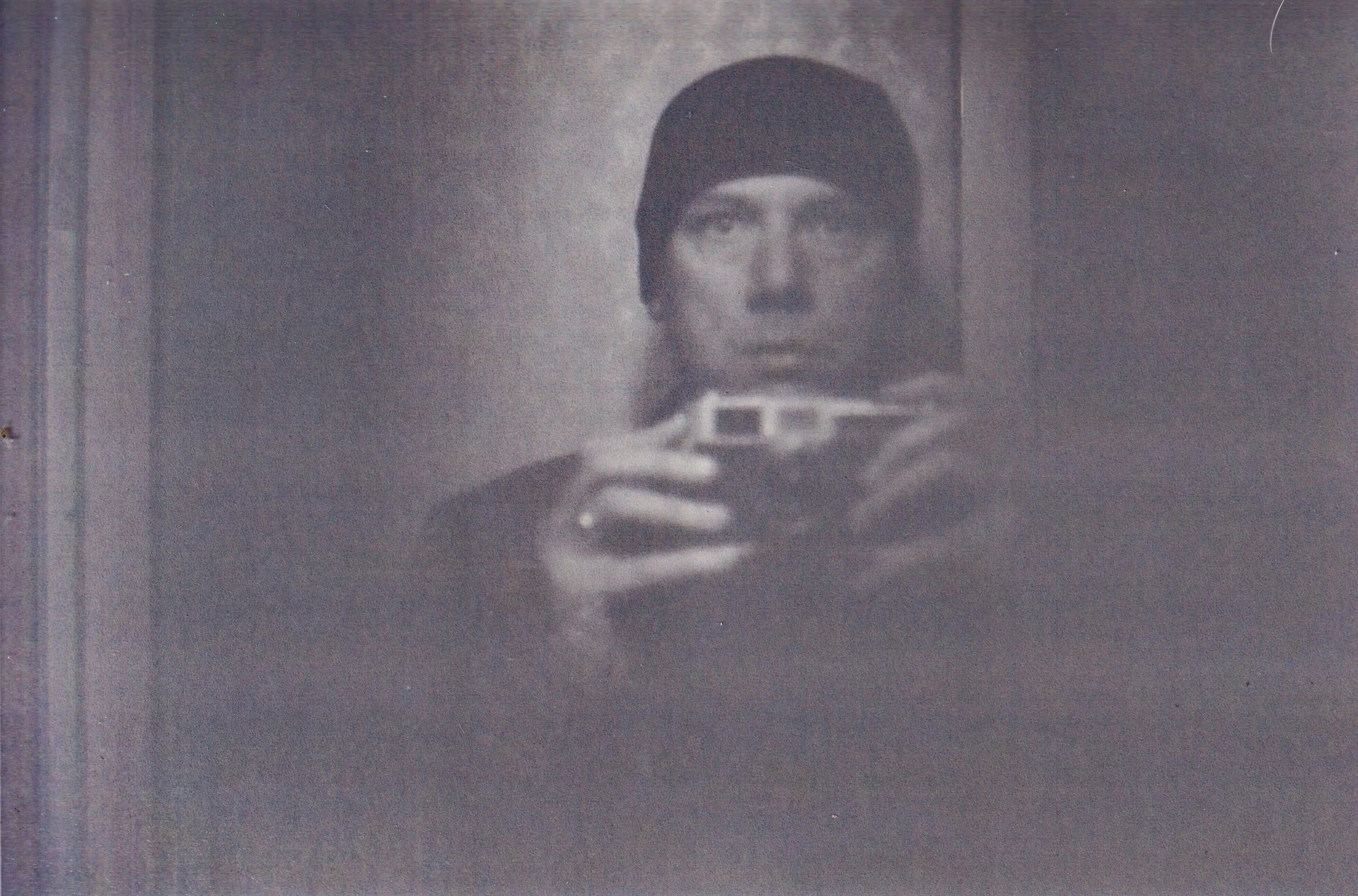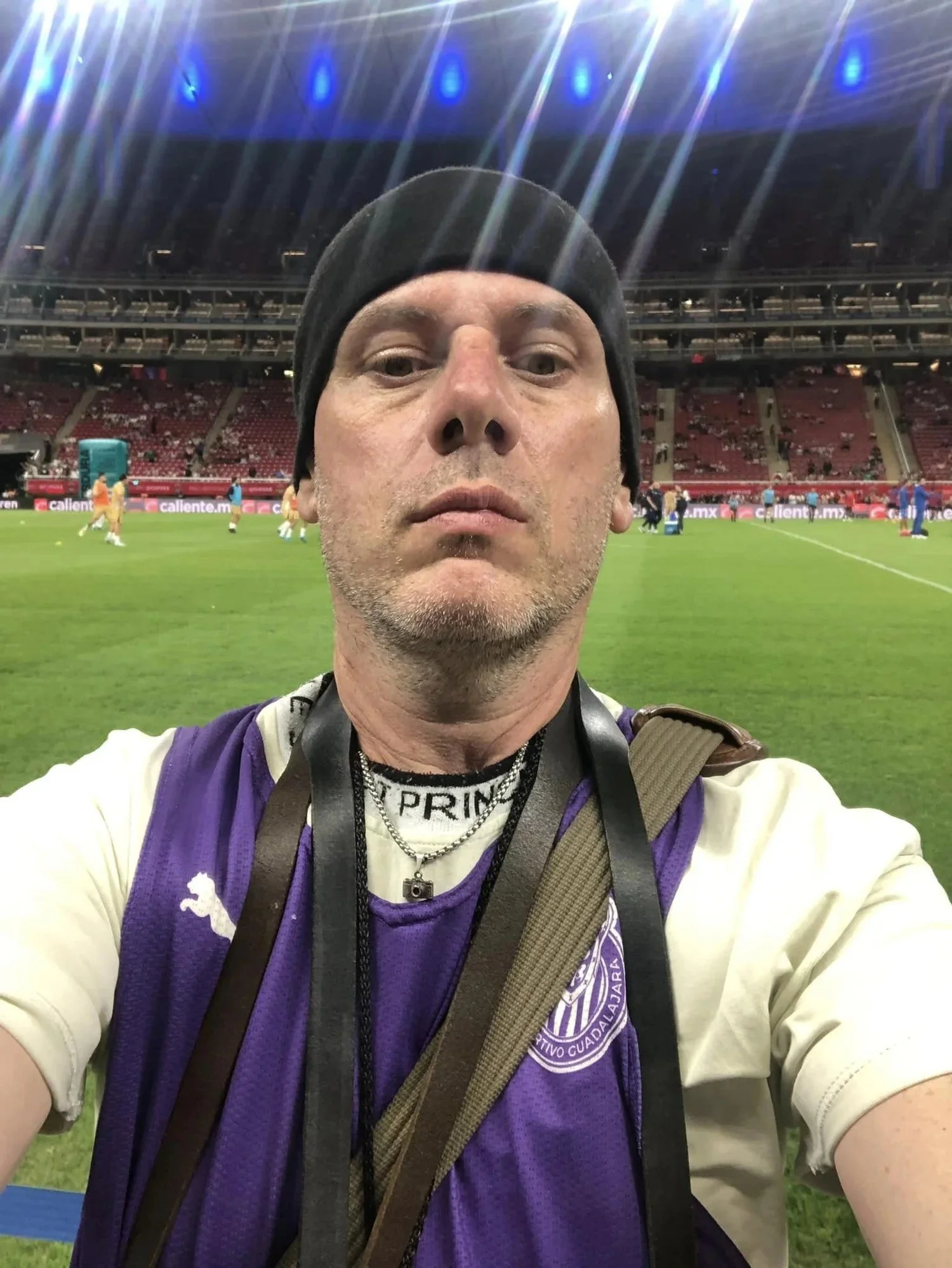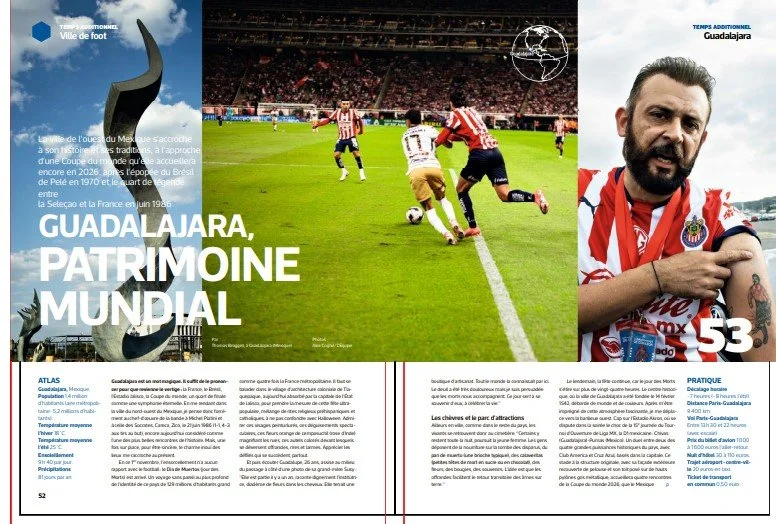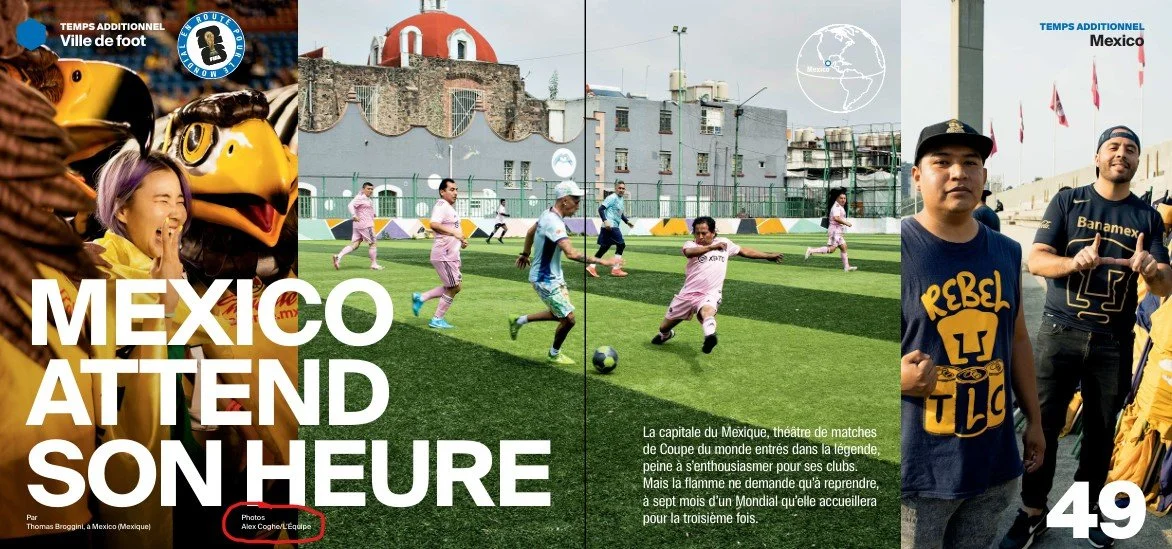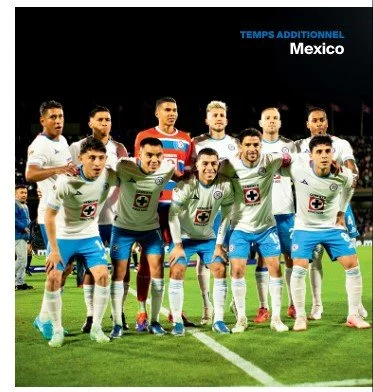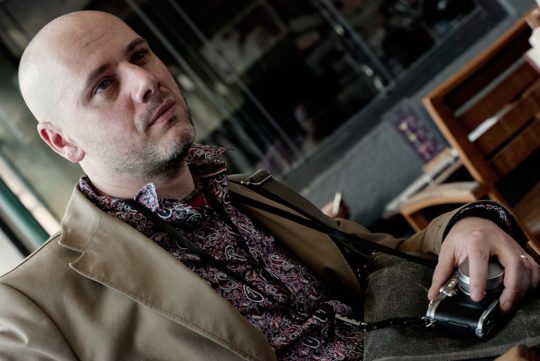About Me: How Leather, Pizza, and Legal Documents Accidentally Turned Me Into a Life Photographer
Before I became a photographer, I unknowingly enrolled in the weirdest, most unconventional photography school imaginable: taught by life itself, with no tuition fees but plenty of burns, blisters, and bureaucracy. And it was the best school of photography i could imagine.
I started as a leather artisan. Saddle-stitching, to be precise. There I was, every day, hand-sewing thick leather with monk-like patience, inhaling the distinct aroma of cowhide while trying not to stab myself with a needle. It was the perfect training for street photography: extreme focus, attention to detail, and the ability to sit with discomfort for long periods of time. In short, I learned to suffer beautifully for the sake of craft: a lesson every photographer eventually learns.
Then came my pizza chapter. Yes, I was a pizza chef. Between flour storms and burning ovens, I discovered timing, improvisation, and the life-saving importance of reading people’s faces when they’re hungry. I burned a few pizzas, survived a few kitchen meltdowns, and sharpened the instinct to react quickly, something that comes in handy when a moment lasts half a second and your finger is hovering over the shutter.
And just when it couldn’t get any more random, I found myself surrounded by legal documents at the State Attorney’s Office. From leather to law, because why not? There I learned the structure, the absurd formality of systems, and the poetry buried in bureaucratic nonsense. I developed a taste for narrative, order, and, ironically, the beauty of the unplanned.
So no, I didn’t study photography in a classroom. I stitched it together in a workshop, cooked it under pressure, and filed it somewhere between law books and espresso breaks.
Now I’m a street photographer. I walk the streets of Mexico and beyond, camera in hand, chasing those fleeting human moments that say everything without saying a word. And when people ask me how I learned photography, I smile and say: with a a crescent knife, a pizza peel, and a legal act.
About Alex Coghe
The Origins: Rome, Books, and Cheap Cameras
Alex Coghe was born in Rome. Not the Vacanze Romane version but the real Rome: the suburbs, the loud, the chaos, the sea in Ostia and the eternal quest for drama. By the age of 8, while other kids were choking on cartoons and sugar, Alex was inhaling Hemingway and Pirandello. Heavy stuff for a kid, but he liked it that way.
At 10, armed with his first camera, a plastic Fujica M-A1, basically a toy with aspirations, he started pointing his lens at the strange universe of his family and anything was around him. It wasn’t about art yet. It was instinct. The raw urge to trap life in a rectangle. But then life came knocking with bills and bullshit: he shelved the camera, played basketball and tennis, wrote some more, travelled flipped pizzas, even more travels in the Italian boot, hammered leather, even worked a straight job in a government office. The lens went quiet, but the eye kept watching.
The Fall Into Obsession (aka Career)
Photography came back like a bad habit, uninvited guest, all-consuming, and impossible to ignore. With a beat-up second-hand camera and no plan, Alex began shooting the streets, friends, freaks, and whatever the city coughed up that day.
Then came 2009. Carmen. Mexico City. Love & Poetry. A move that felt like stepping into a cinematic fever dream. Suddenly the camera wasn’t a toy or a tool: it was everything. The city infected him. Colors, chaos, contradictions. He started shooting obsessively, like he was trying to decode the place before it swallowed him whole. And people started to notice. First online. Then in real-life galleries.
The turning point? 2011. Los Angeles. A gallery show, the occasion has also become a Leica collab, a few weeks of California surrealism: where Bukowski placed himself. It snowballed. Leica came back in 2013, offered him a gig: PEOPLE OF CHAPULTEPEC: portraits from inside Mexico City’s giant green lung. That series turned his name into a brand. Suddenly, his street snapshots were inside a catalogue scattered around the planet. Go figure.
Then came Oaxaca in 2015. He didn’t find it: he crashed into it, and never left. Now it’s home. He works with NGOs, travels through dusty towns in the Central Valley and Mixteca, camera always ready, boots muddy, chasing stories most people don’t even know exist.
The Work: Sharp Eyes, Dirty Shoes
Alex shoots like he writes: with zero pretension (but with intent) and a gut-level honesty. His photos don’t try to be clever. They just are. Beautifully imperfect, broken, funny, painful: sometimes all in the same frame. He sees what most people miss: the poetry in peeling paint, the dignity in worn faces, the absurd in the everyday.
His subjects? His wife Carmen (brilliant, brave, and always a step ahead of him), his neighbors in Mexico City, the ghost dogs of Oaxaca, the unsung heroes of backstreet taco stands. He doesn’t exploit. He connects. That’s the difference.
The Aftermath: Influence, Impact, and a Permanent Hangover
Alex still lives in Mexico City, chaos central, and keeps doing the work that matters to him: portraits, street shots, visual chronicles of community, resilience, and identity. His photos have hung in galleries around the world, ended up in private collections (even in a Roman theater, of all places), and one made it into a permanent collection in Italy. He laughs at that sometimes.
The Man Behind the Camera
Off-duty (if such a thing exists), Alex is deeply loyal to his friends, his roots, and Carmen, his partner in crime, his mirror, his calm in the storm. They’ve built something rare: a life where art isn’t a weekend hobby or some Instagram hustle, but a full-contact sport. Together they ride the strange wave where art and ethics collide, trying not to drown in the bullshit, the noise, the ego games. This pact is sealed through immersion in books, cinema and the certainty that life must be taken in a surreal dimension. Also because evil witches exist like in a David Lynch movie.
Alex doesn’t go in for the glamour of the "art world." He prefers long conversations over food, the sound of shutters clicking in alleyways, and the weird poetry of everyday chaos. He’s more at home in a dusty cantina than a white-cube gallery. He believes in listening more than talking, walking more than posing, living more than curating.
When he’s not shooting, he's probably writing with the same ferocity, documenting life with ink instead of light. Books, blogs, notebooks full of messy thoughts. And through it all, Carmen is there, keeping it real, reminding him to eat, breathe, sleep, sometimes all at once.
Contact
Alex Coghe is still out there, camera in hand, boots on the ground, eyes wide open. He’s open to commissions, collaborations, exhibitions, or any strange and beautiful idea that smells like truth and sweat.
He doesn’t chase clout, but he does believe in meaningful work, the kind that connects people across borders, languages, and bullshit. If your project has a pulse and a purpose, he’s listening. Just don’t show up with moodboards full of fake smiles and stock-photo dreams.
To get in touch, head over to the contact page. No forms, no filters: just real talk.
A Note For Clients
Look, here’s the deal.
Alex Coghe shoots black and white like it’s a sacred ritual, here shadows speak louder than words and light is sculpted, not just captured. His monochrome work has the weight of a confession and the clarity of a scream. But don’t mistake him for a purist: he masters color too. Real color. Bold, unapologetic, alive.
He’s no stranger to the unpredictable rhythm of football matches, where emotion spills faster than beer and every frame is a battle. He’s worked in the roaring heart of the game, capturing the raw electricity of the pitch. On the flip side, he’s navigated the velvet shadows of high fashion, documenting the glitter-soaked nights of events thrown by one of the most iconic luxury brands. Style, decadence, ego, elegance: he’s seen it all, and shot it all, with unflinching honesty.
For brands and clients looking for more than just polished visuals, Alex delivers images with soul. He doesn’t deal in content: he crafts stories. Whether it’s under stadium lights, streetlamps, or runway spotlights, his work cuts through the noise and lingers in the mind.
Monochrome or full-spectrum, street or stage, his focus is always the same: to create images that hit hard and don’t let go.
Speaker at Orvieto, 2018 event organized by FIOF
Photographer for L’Equipe
Photographer and Writer
Photojournalist featured on France Football, Life Force Magazine, La Stampa, Il Giornale, Cuartoscuro, Foto Zoom, Prisma News, L’Indro, Leica Camera Blog, El Sol de Tlaxcala, EL Financiero, Excelsior, Witness Journal, Athens Voice, Gaceta UNAM, Huffington Post, The Guilty Code, Mas Por Mas, Outscape Photography, Everybody Street, FIOF, Inspired Eye, Best Selected, Focus on the Story, DOC!, Samsung, Fujifilm, Mexico Desconocido, Olympus Passion, Canvas Rebel.
Alex has a blog in Italian language: FOTOREPORTANDO
CAREER
Early Photography Interest (1985-1992)
Alex Coghe develops an interest in photography during his youth, when he was 10 years old with his first camera, a Fujica M-A10 then he used also a Minolta reflex semiautomatic
A large stop from photography focusing on his activity as a writer and of course with several job experiences (leather craftsman, pizza chef, work for the government in Italy)
Photography Education and Beginnings (2000s)
Attends photography courses and workshops to hone his skills, using his first digital cameras
Starts experimenting with different genres and techniques
Begins to gain experience
Discovers a passion for street photography
Begins documenting life on the streets, capturing candid moments and urban scenes
Moved to Mexico (2009)
Creates a street photography community in Italian language
Starts the activity as blogger
Became a correspondent for Italian magazines (2010)
He got married with Carmen
While he gives Italian language classes in Chrysler Mexico altogether with his wife, he expands his activity as photographer
Becomes correspondent from Mexico for some Italian magazines contributing with photographs and articles of cultural, social and political analysis
Establishes himself as a professional photographer
Los Angeles (2011)
Works in Los Angeles for 3 weeks and launched his official website
Back from Los Angeles through the project REALITY REMADE he was the first street photographer to use the ICM technique, creating ghosts
Starts the collaborations as writer for The Leica Camera Blog
Begins teaching photography workshops and sharing his expertise online and in person
Growth as a Street Photographer (2012-2015)
Continues to refine his street photography style
Participates in exhibitions and showcases his work online
Gains recognition within the street photography community
Works on assignment for brands and started collaboration with agencies as a photojournalist
Workes on assignment for Leica Camera AG
Works on assignment for Burberry
Starts the editorial project MEXICANA
First workshops in Italy
Focus on Documentary Photography (2015-2017)
Expands his focus to include social documentary photography
Works on projects that explore social issues and cultural themes
Collaborates with organizations and NGOs on documentary projects
First Day of the Dead Photography Expedition in Oaxaca
Starts the editorial project THE STREET PHOTOGRAPHER NOTEBOOK
Joins 2 journalistic agencies
Collaborates with NGOs
Provides journalistic coverage of the earthquake in Mexico
Exploration of Photography Books (2017-Present)
Ventures into the world of photography books
Publishes books featuring his street and documentary photography
Builds a following as an author and photographer
Conference as Guest at Orvieto FIOF event
He holds his first solo exhibition in Mexico City
Launchs the new website with a new blog
Added video expertise to my services and renewed his YouTube channel
Becomes Youtube partner
Realizes his first video documentary in Oaxaca
The expeditions mark a change through the GONZOGRAPHY concept
alex street is introduced as new brand proposing experiences to photographers of any level
He starts to work on assignment for L’Equipe/France Football
CLIENTS
L’Equipe/France Football, Leica Camera AG, Samsung LMTD, Burberry, Basilica de Guadalupe.
COVERAGES
Vogue Fashion’s Night Out, Earthquake 2017, Guelaguetza, Gay Prides in Italy and Mexico, Migrants in Mexico, Guadalupe, Biafra in Rome, Italy
COLLABORATIONS
Puente a la Salud Comunitaria, GESMujeres, Oaxaca (Mexico).
EXHIBITIONS
PERMANENT COLLECTIONS
- MEDITERRANEUM COLLECTION (3 photos)
- Teatro degli Audaci, Roma, Italy (1 photo)
GROUP SHOWS
- 2010: Forum Can Bastè in Barcelona: street photography event.
- 2011: In Strada Fabula in Rieti (Italy): street photography collective exhibition.
- 2011: You Are Here in Los Angeles, California (USA): street photography show.
- 2012: Exhibition Friends, La Spezia (Italy).
- 2012: Guest Exhibit @ Miami Street Photography Festival, Miami, Florida (USA).
- 2015: Teatro degli Audaci, Roma (Italy): multidisciplinary group show.
- 2015: Gudberg Nerger Gallery, Hamburg (Germany): 1 photo in video, group show for World Street Photography 2015.
- 2016: Pictura Gallery, Dordrecht, Netherlands: noise collective exhibition.
- 2016: Gudberg Nerger Gallery, Hamburg: World Street Photography 3 Exhibition.
- 2016: Thessaloniki’s port in Warehouse C’, Greece: "The way EYE see it" Blind Pilots Project Exhibition.
- 2017: Exhibition @ Centro Cultural Estacion Indianilla Art Gallery in Mexico City, Fujifilm Mexico event.
- 2017: Rotterdam based artists, Rotterdam, The Netherlands.
- 2018: Exhibition @ Palazzo Coelli, Orvieto.
- 2018: Exhibition @ Alte Kongresshalle, München: PICTAday.
- 2018: Exhibition @ Sotterranei del Castello, Barletta.
- 2019: Exhibition @ Kolkata International Photography Festival.
- 2023: Exhibition @ BOARDS & ART HOUSE FULLE GALERIA DE ARTE with a selection from “Mannequins” in Buenos Aires, Argentina in the historic center neighborhood of Santelmo.
- 2026: Eyes on Main Street Inc, May 15 - August 30, 2026, Wilson, NC, USA
SOLO SHOW
- 2020: AMERICANA by Alex Coghe @ Chirindogueria, Mexico City.
CONFERENCES
- Webinar for San Costanzo Fotografia (Italy), Torino (Italy), Antiguo Colegio San Ildefonso, World Trade Center, Mexico City (Mexico), TEC Monterrey, Nuevo Leon (Mexico), Orvieto (Italy), Palermo (Italy), Webinar for Encuentro Fotográfico México.
Workshops and Expeditions:
- Italy: Roma, Firenze, Milano, Torino, Palermo.
- Mexico: Ciudad de Mexico, Oaxaca.
WORKSHOPS
- Universidad de la Comunicacion (Mexico City).
- Escuela de Teatro (Mexico City).
- Centro Cultural Zona Rosa (Mexico City).
- Palermo Foto (Italy).
NOTES by Alex Coghe
I only shoot in jpg.
I almost never crop my photos, even now that I work with a 24mm on the street.
My workflow follows a similar approach to when I shot film at the age of 10. It is based on the recognition of a photographic moment, on intuition with intention. When I press the shutter button, in fact, the process is finished.
I recently created my own preset to have that aesthetic that respects my way of seeing. That's all.
I do not pretend to say that my method is better than that of others. It is simply mine and it works for me.
Even the operational choices on the street with the camera settings, I am convinced, lead to the formal and content results of my photos.
I do not seek perfection but rather perfect imperfection. Aware that every attempt to reproduce reality in photography is a mere illusion, I try to bring the truth. Of course my truth, the one I tattoo on my soul.
I claim something important: I create the image.
I do not collect. I choose the focal length with which to shoot in the street. I choose the distance from the scene. I choose when to shoot. I choose the cut and, therefore, what I put in and what I leave out.
The image is mine. It is an imperfect scene of reality. Imperfect because inevitably incomplete. For this reason it can never be reality but a portion of reality. A fragment. And it is through this fragment that communication is realized.
A non-verbal and always visual communication and in this lies the great strength of photography.
I would say that even though working instinctively and in a situation of constant variable and imponderable nothing is truly left to chance. Photography is the result of an experience that, in a photographer, manifests itself through a deliberate, even impetuous action, deriving from a study and knowledge that are finalized in the image.
We can understand, in this way, that the act of shooting is revealing because it includes the gesture, the presence, the previous study, even the evolution and the trajectory of where one goes as an author.
In imperfectly reproducing reality I create the image that has distinctive and personal signs.
For this reason I say that I create, I do not receive.
Too many people are convinced that a photographer should only take photographs. But this is a crude reasoning, however widespread, that reduces photography to a mere technical gesture.
In reality, a photographer, a true photographer, is a conscious and cultured individual who communicates ideas and positions, points of view, through photography.
Let us be wary of those photographers who claim that they do not want to talk or, even confess, that they do not know how to talk about their work. All the photographers, the great photographers, that I have taken as a point of reference were or are fantastic communicators who, through meetings with other people, manage to analyze their own authorial path.
It is not even a question of being verbosely academic, but rather having communication skills that lead to real sharing with an audience. It is no coincidence that in this diptych that I have extrapolated from my work HALF FRAME there are two of the photographers that I consider to be among those who are most missed today: Giovanni Gastel and Efrem Raimondi.
I have had the privilege of giving several conferences in important places. I know how extremely important it is to communicate one's photographic experience to others. I believe that, unlike photographic exhibitions, it is something that I value more because, if done well, the so-called lectio magistralis allow you to arrive at something even more ambitious: generating communication and an exchange of ideas with the person in front of you and, finally, presenting photography as a "cultural object".
If certainly a photographic exhibition can be considered a point of arrival (or even of departure) for a work created, in communicating in the context of a conference the photographer truly opens up to others, going beyond egotistical satisfaction, truly exposing himself, perhaps even showing his own fragility as a human being.
I believe that we absolutely must value more all those photographer authors who really put themselves in a position to present themselves like this, in front of an audience. Not everyone does or can do it. And that is exactly the point.
Intuition. Intention. Instinct.
The reaction comes almost immediately. Reaction times vary, from person to person, from moment to moment. We are not always ready to react (frame and shoot) in the same way.
The intuition that comes from the visual stimulus makes us recognize and decide. The intention will be the result that we will see in the photograph. And it is not at all certain that we will succeed. Instinct is that irrational form of acting that we must train like a muscle.
In my photography I am very interested in how certain sensations that I feel when I observe work. To be honest, I almost never look for a story. For me it is more important that an image acts on an even deeper level than the didactic and therefore the rational. I count on certain visual stimuli that give me pleasure to be found with the same strength by the observer. The same strength that I do not pretend corresponds to the same experience. May everyone be able to make their own through the enjoyment of my images.
As a street photographer, I am trying to find my place. I am very interested in the issue of giving more weight to form, because I am convinced that a photograph must generate pleasant sensations. No, I am not talking about taking beautiful photos, but rather I am keen to define an idea of my aesthetic world, a way of looking at the world around me. Hence the choice of colors to be able to produce a visual sensation that can communicate a lot about my world, about what I live through an expansion of the experience in that place and in what I have in front of me. Not of mere reproduction, however. Giving photographic character through choices aimed at presenting an absolutely personal photograph, in a “genre” currently over-inflated with proposals.
It is not easy. You try. But a good start comes from having ideas.
I want a photograph that projects. That inspires to enter a dimension. Offer a perception. And why not? Even a memory.
I am the son of a time that I have lived but not in first person. With aesthetics acquired from my visual education. From neorealism, from Fellini, from the writings of Hemingway and Moravia, of Ellis and Landolfi, of Pirandello and Hesse.
And so what I see is what I have lived and not necessarily on my skin. Maybe through feelings and sensations, made my own through readings, the visions suggested by music and cinema. And that I try to convey through faces and photographic intuitions, I try to find iconic scenes.
This is what my photography is about, or tries to be about.
ASSIGNMENTS AND COVERAGE
They said…
Immediately, when we look at photographs by Alex Coghe we think of Daido Moriyama, and Shomei Tomatsu before him. Clearly, Coghe has studied this school of Japanese photography and has acquired the aesthetic. Like Moriyama and Tomatsu, Coghe is on a quest to discover the reality around him; to untangle our world and then blur it all out again.
When we study these photographs we see both reality and the unreal all at once. The very first image in this book is of a man entering an elevated subway a few pages later, another man leaving one - what could be more real, more familiar? At the same time, when we look at these images our mind wants to wander from that reality. We know what we are looking at, and yet, we are looking at something unusual, something abstract also. This is the very appeal that is found in the photographs throughout Nasty.
But we don't only see the Japanese photographers at work in Coghe's photographs, we are also reminded of the banality of Eggleston's work and of the fragments of Mark Cohen's photography. At first glimpse, some people may accuse Coghe of merely copying, but of course that is not what is at play. Coghe does not copy, he engages, he participates in a conversation between the generations of photographers, he adds to that conversation and does so in a way so as not to be forgotten. This, of course, is the purest form of photographic innovation - informed but unique, familiar but fresh.
Some of the images in this book are so fragmented and full of grit and grain that only the wildest of imaginations might construct definite meaning from their abstractions. This is not a negative. Photography has every right to be engaged in the abstract, it is part and parcel to the very art of constructing an image. Coghe employs this masterfully throughout this volume taking us on a wild roller coaster of detachment and even daydreaming before snapping us harshly back to reality over and over again. It's thrilling. It's exhilarating. It's Nasty.
As an avid collector of the likes of Moriyama and Cohen, as well as a photographer from this very school myself, I welcome Coghe's work into the contemporary photographic world with open arms. The photographs between these covers deserve not only to be indeed between these very covers, but also among the finest collections of contemporary books of photography. Alex Coghe's work will endure. It is dark, but honest. It is blurred, but real. It is fragmented, but complete.
Nasty is a clear departure from the sameness that plagues contemporary photography. I am tired of all the perfect photographs. Technical perfection is greatly overrated and nothing more than merely a product of the abundance of technology now at our disposal as photographers. But what of the subject matter or the larger narrative? These fundamentals are lost on too many of the emerging photographers at work today. We see an endless stream of "perfect photographs", but they lack story, they lack fresh subject matter, and they lack true innovation - they are void of voice. This is not so with Nasty. This volume of photography not only speaks, it adds something new. And something new, when it comes to art, is the ultimate achievement.
Michael Ernest Sweet New York, New York - FOREWORD FOR THE BOOK ‘NASTY’
In an essay on photographer Saul Leiter, Nigerian-born American writer Teju Cole tells us that for a long time, color photography was considered superficial and suspect, and that it wasn't until the 1960s that MOMA became interested in William Eggleston and photographers working with color. But a decade earlier, Saul Leiter, had already been doing color street photography. Only Leiter had to wait until 2006 for his work to get the recognition it deserved. Today, color is commonplace among street and documentary photographers.
If I had to describe Saul Leiter's photography, I would say that Leiter wrote poems with his camera. The same could be said of Alex Coghe's photography, only Coghe's poems are harsher, less idealized, hyperrealistic. Perhaps, Alex Coghe's work reminds me more of street photographer, Joel Meyerowitz, and even more of personal journalist, Nan Goldin.
Alex Coghe's photographs do not have a usual composition. As far as I can tell, he never cuts them in post production. He decides to leave fragments of people, cars, objects and everything around the subject he is photographing inside the frame. This makes us feel that we are in the middle of an enveloping reality; as if we were located in the exact place where he is taking the photo. In some images we can see the photographer's intention to find a symmetry and to take our sight through lines that lead us to discover the same things he sees: that which seems to be hidden in the city, that which happens only for a second and then is lost forever. He takes us to discover a place, but not as tourists, but as travelers; as silent witnesses of a time and a place that struggles to survive poverty and marginalization. He shows us a way of life, an atmosphere and the human condition of its inhabitants, who bear little or no resemblance to the inhabitants of other parts of the world.
Alex Coghe's street work revolves around different themes: the socio-economic contrasts of the city, the bizarre characters that circulate in the streets and their different trades; folklore, daily life, the unusual and the bizarre. Alex Coghe's ability to find patterns and colors in the city, as if he had an internal radar, is striking. People wearing one color and standing next to objects of the same color. Geometric shapes that are repeated among people and objects, in a precise moment and place, showing us that it is possible, if we have the talent and the necessary observation capacity, to find the mysteries that happen all the time around us.
The everyday scenes in Alex Coghe's works are deceptive, because they have very little to do with everyday life. If we look carefully, we will find that at some point in the image something out of the ordinary is happening and that life is anything but monotonous, for those who develop the capacity for admiration (like that photograph in which there is a group of people gathered together and, underneath them, the sidewalk seems to rise with ferocity). Because this is what Alex Coghe has: a latent and furious admiration for the world around him. An interest in living beyond the mundane and transcending through art.
Alex Coghe's work is not a work for just any observer. It requires a greater engagement for the viewer than the work of other photographers. Photographers like Alex Coghe are there to show us the path of discovery. The importance of living in the present and giving each thing a meaning and, to our existence, a more profound sense.
Juan Francisco Hernández - FROM THE ESSAY ‘ALEX COGHE: DOCUMENTING THE STREETS OF MEXICO CITY’
DISCOVER MY WORKSHOPS AND EXPEDITIONS
As a Photo Coach with a decade of experience I provide unique photographic workshops and expeditions. Mexico City and Oaxaca are ideal places for photography. I assure you that you will come home as a new photographer, with many ideas for the future, for your evolution in the world of photography. Please check out the experience for you:
Now I am also on airbnb hosting cool experiences: CLICK HERE FOR INFO
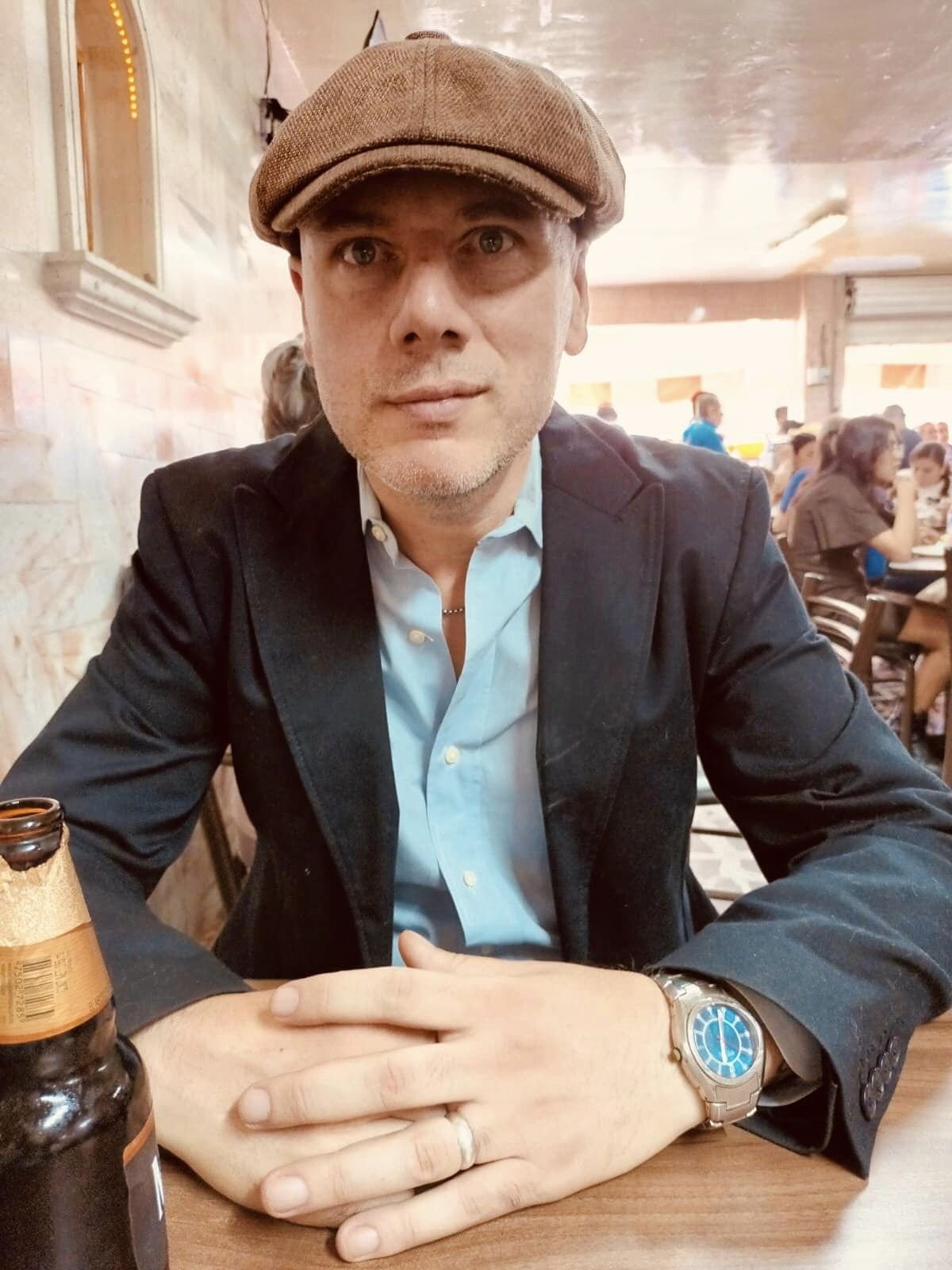
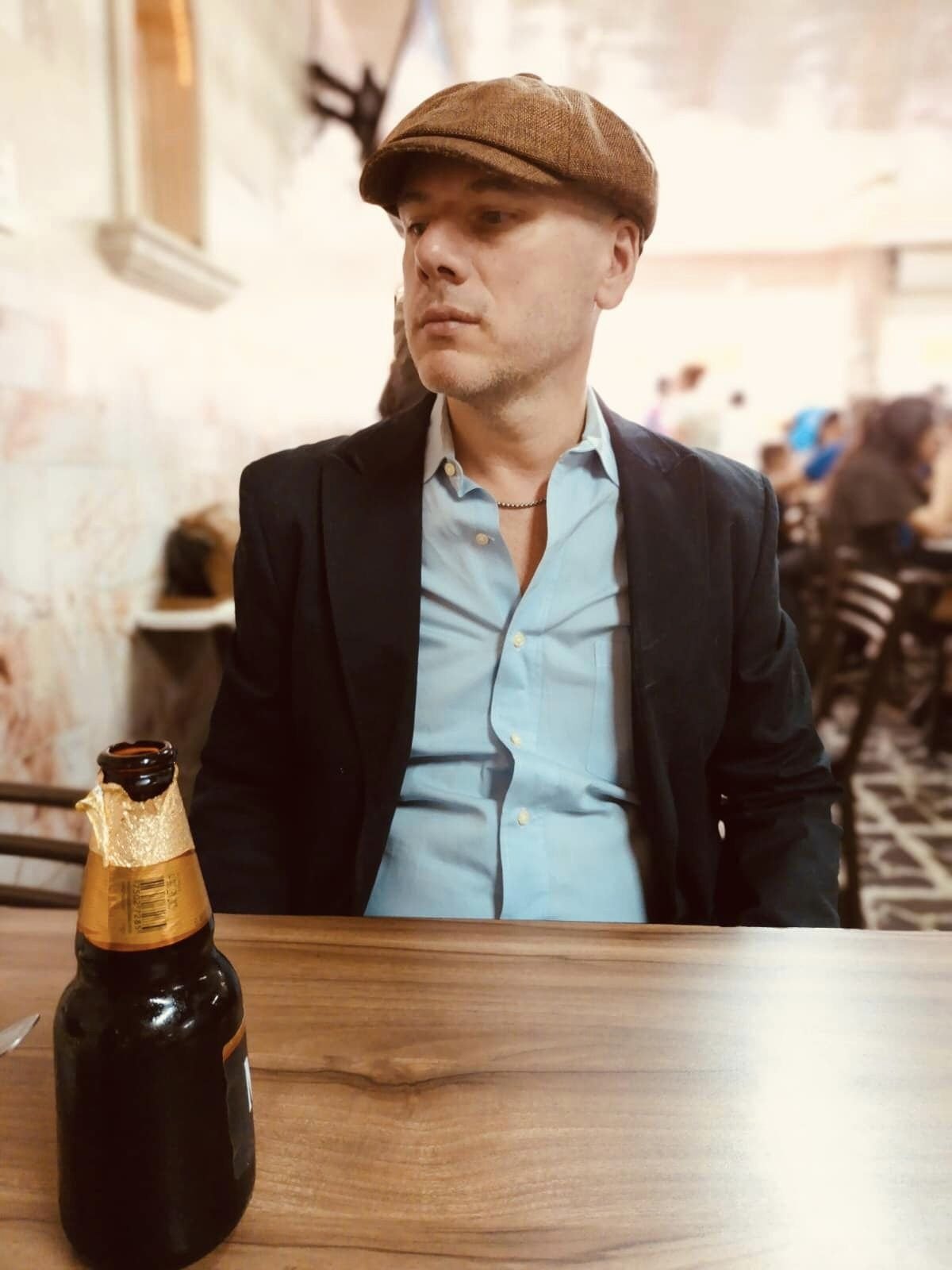
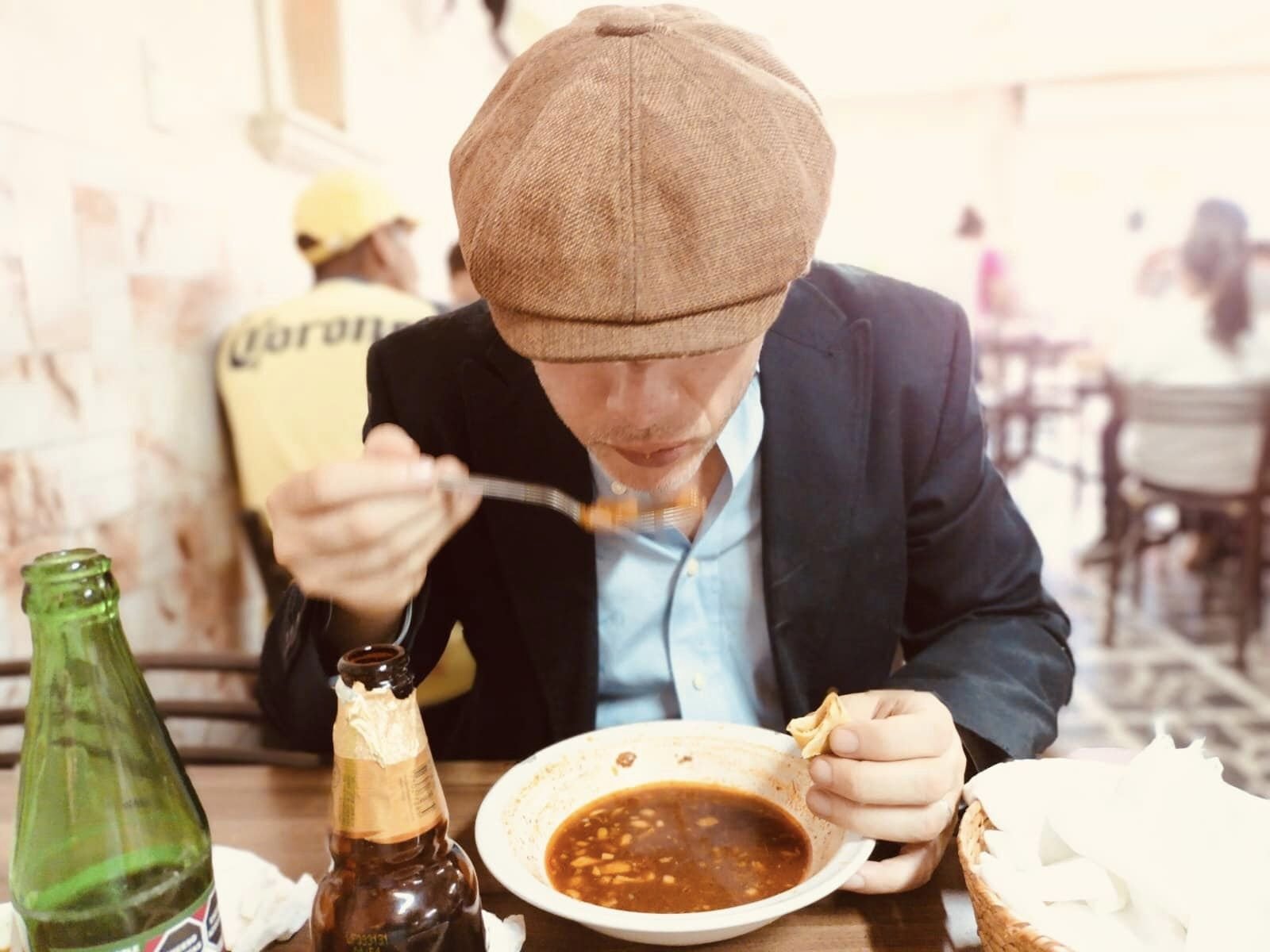
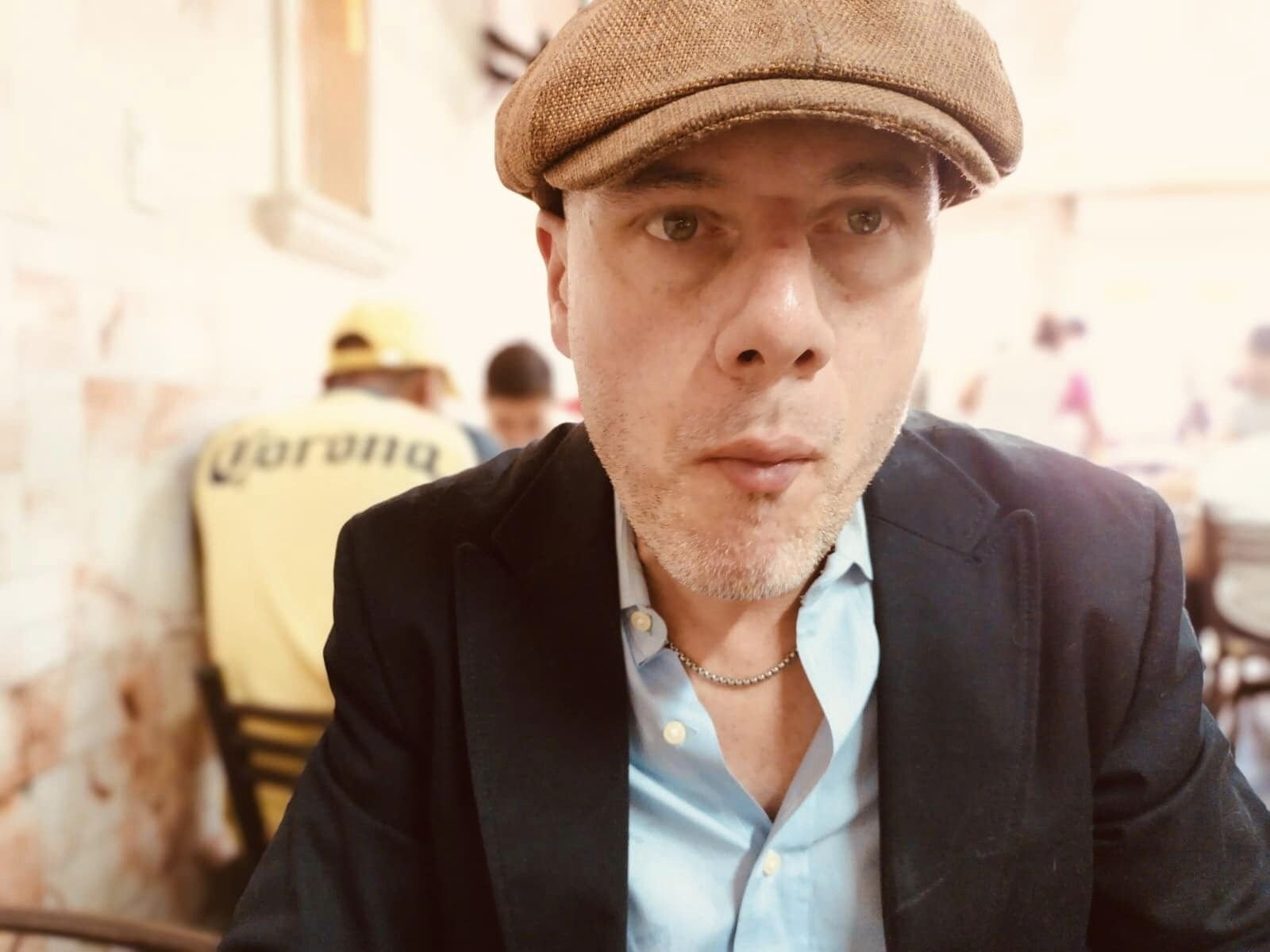
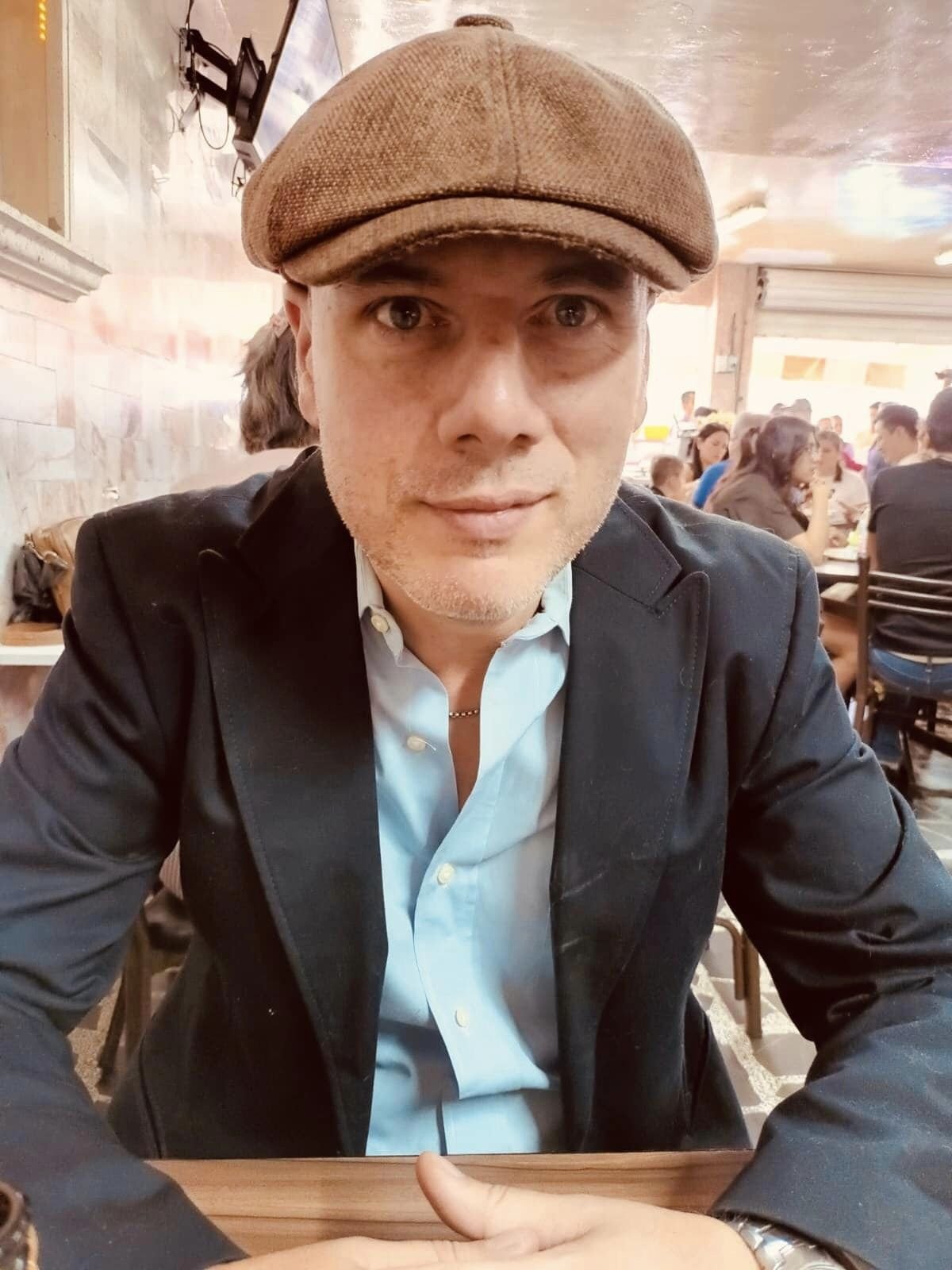
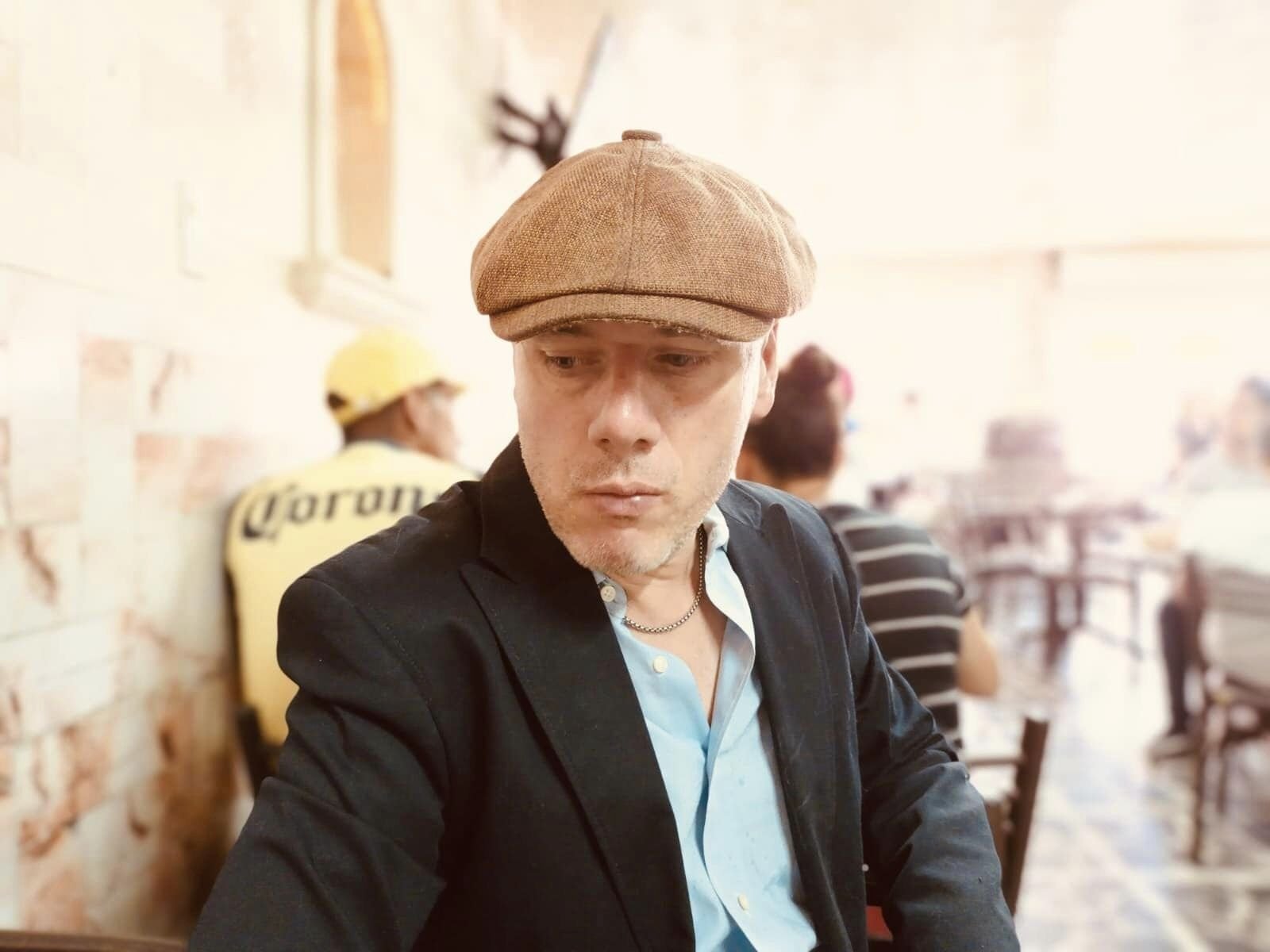
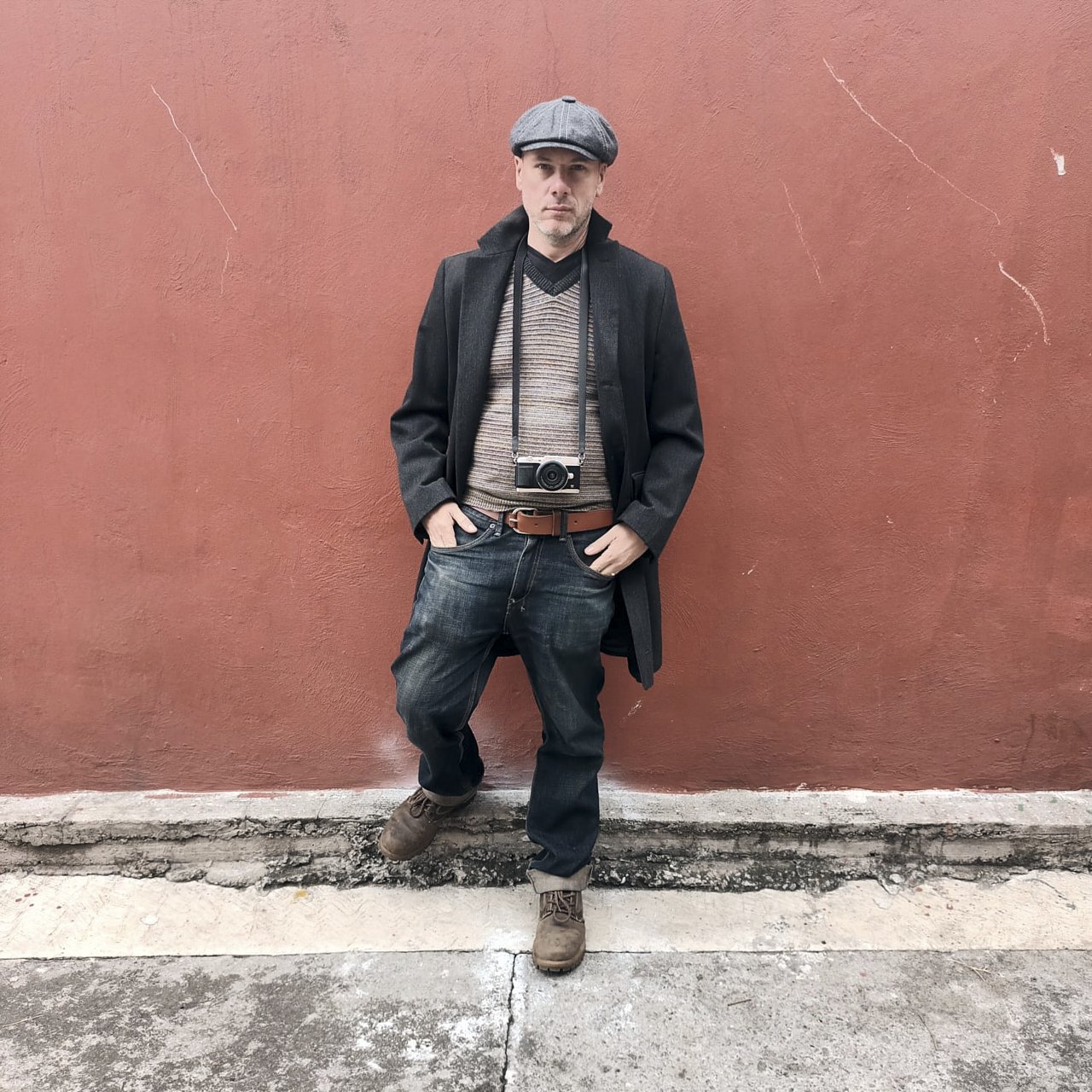
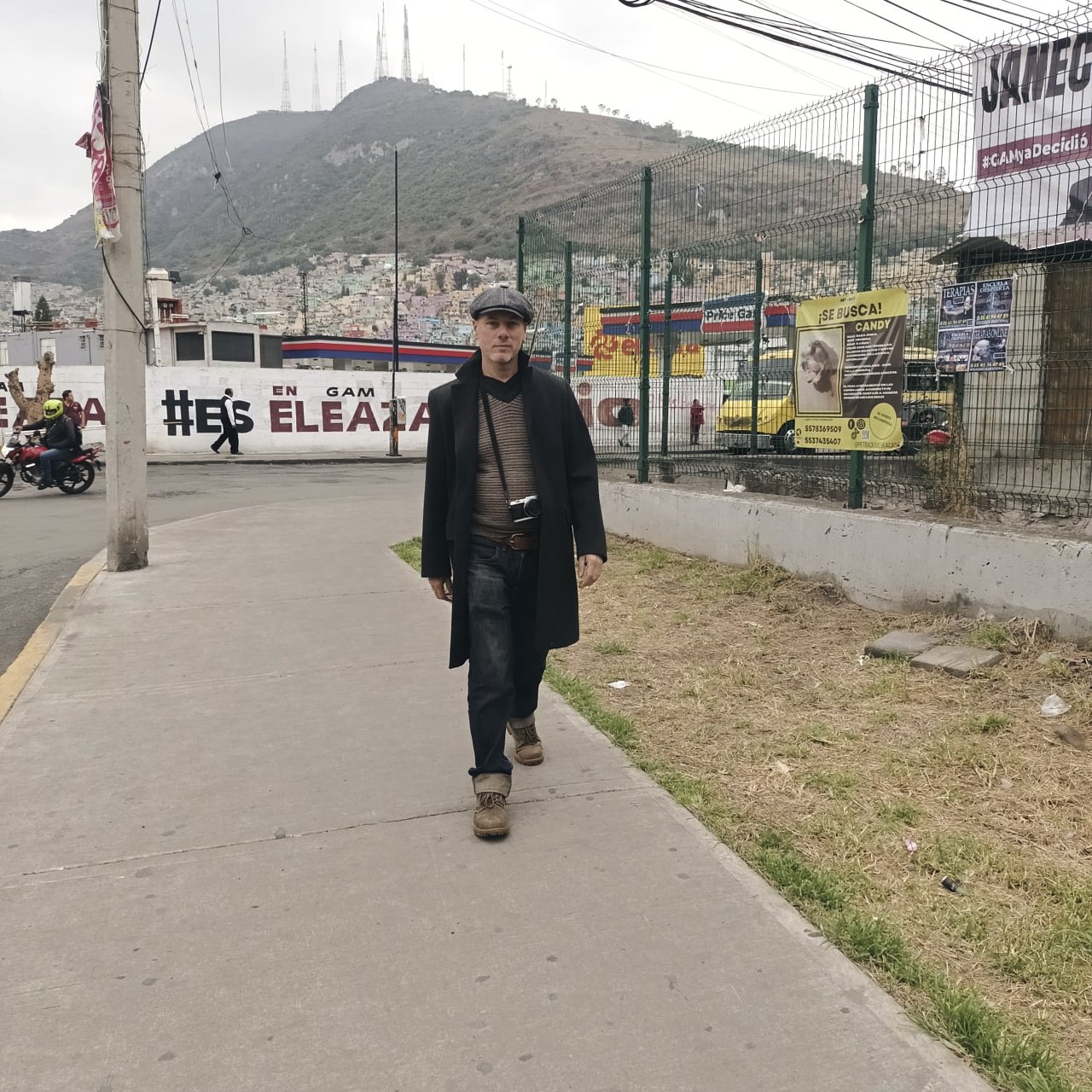
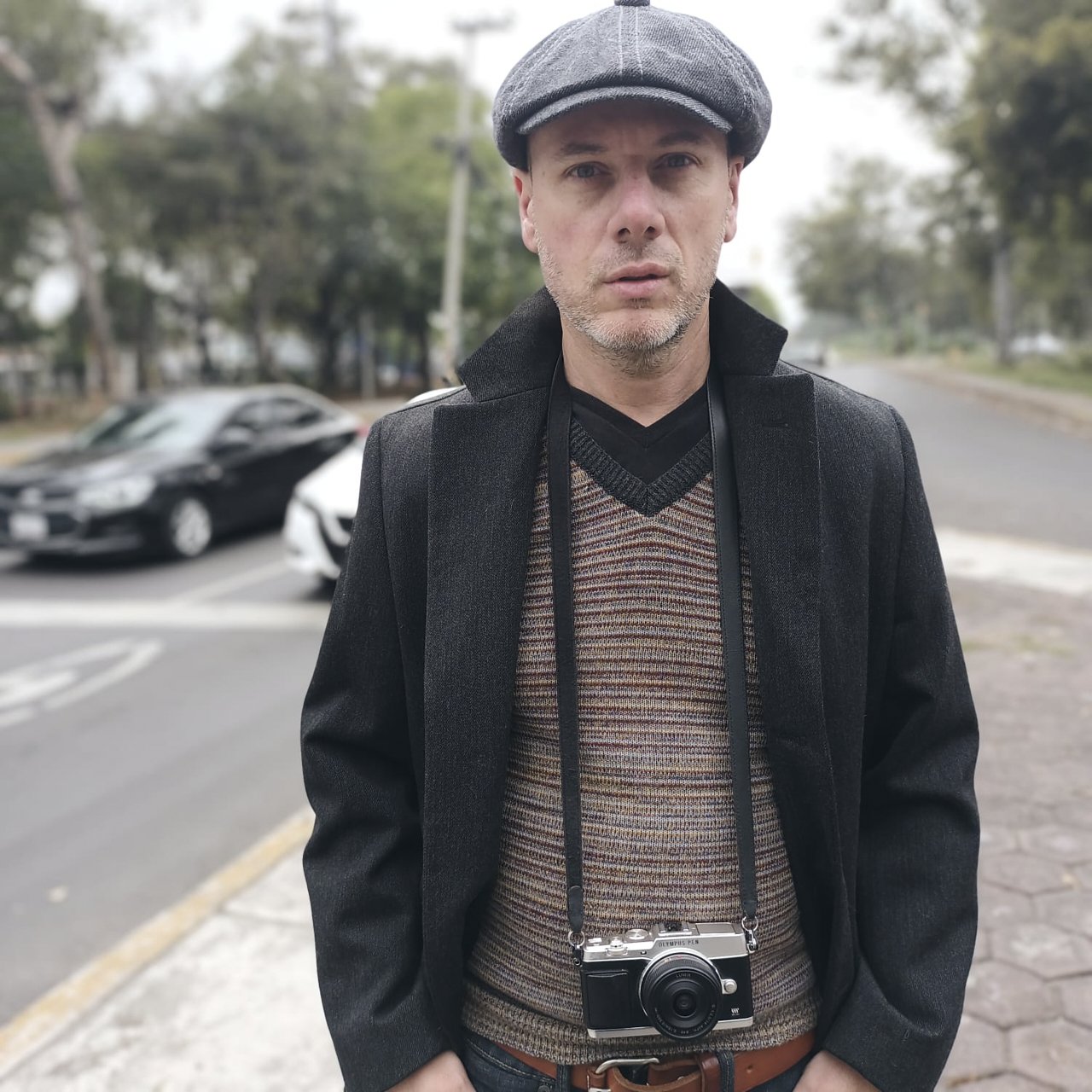
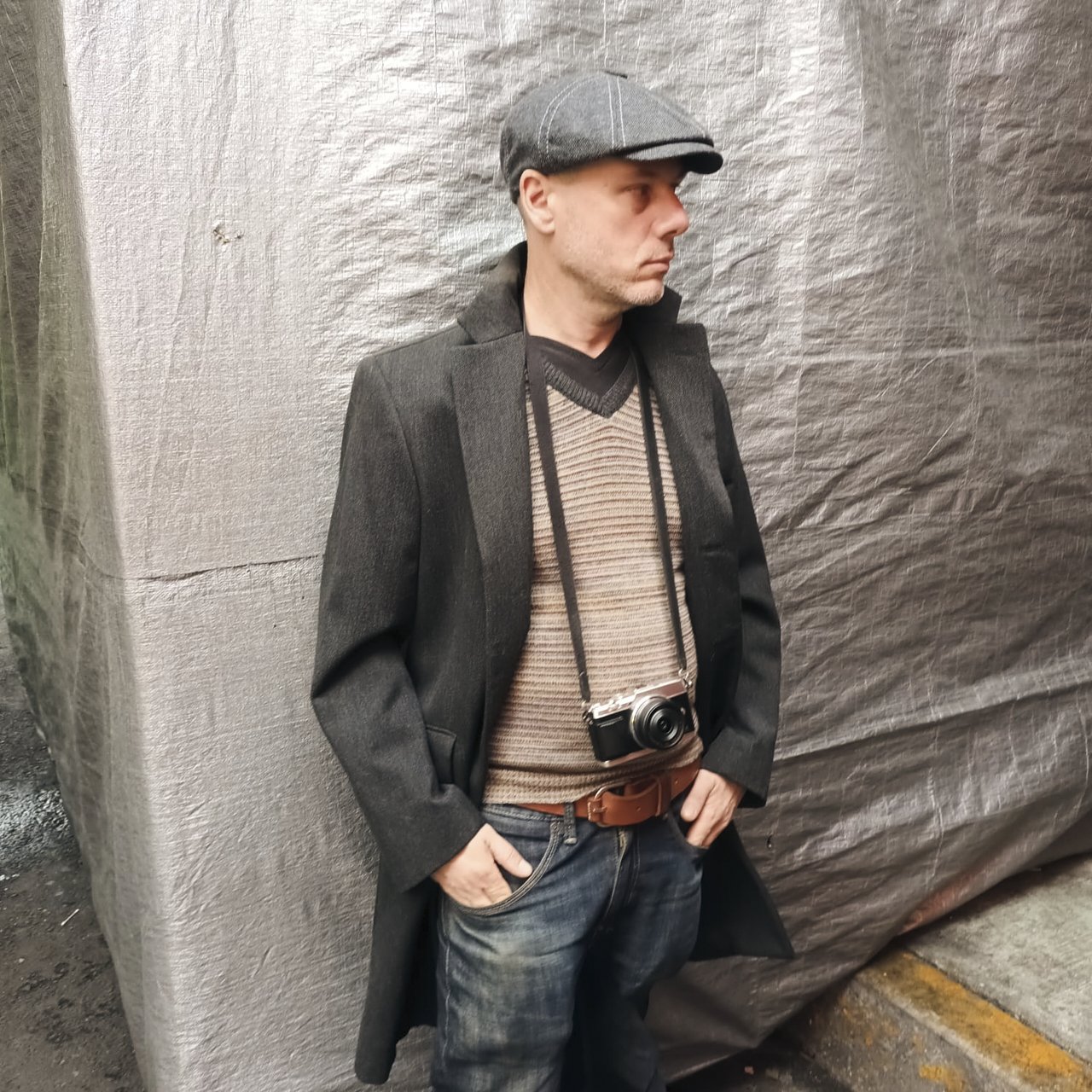
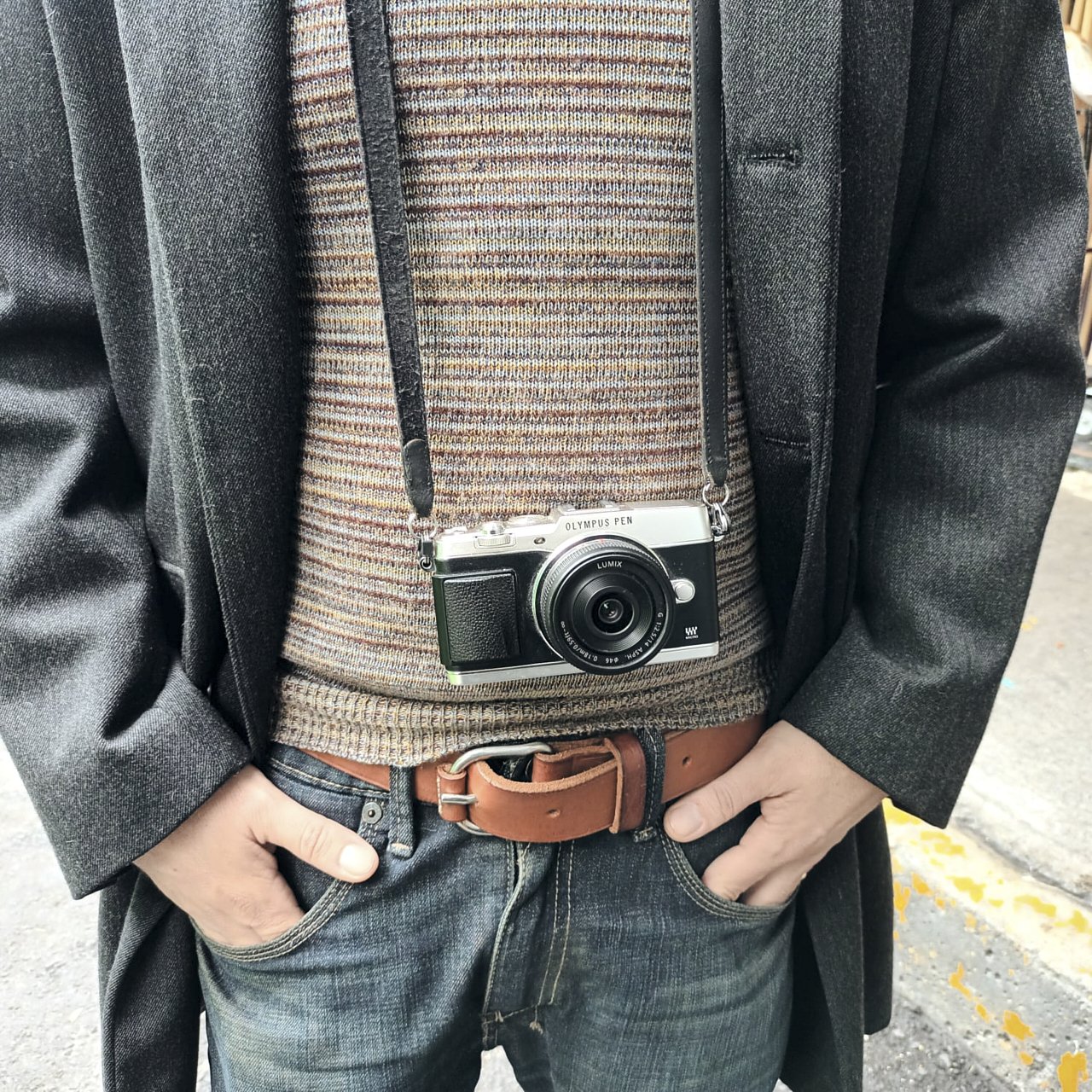
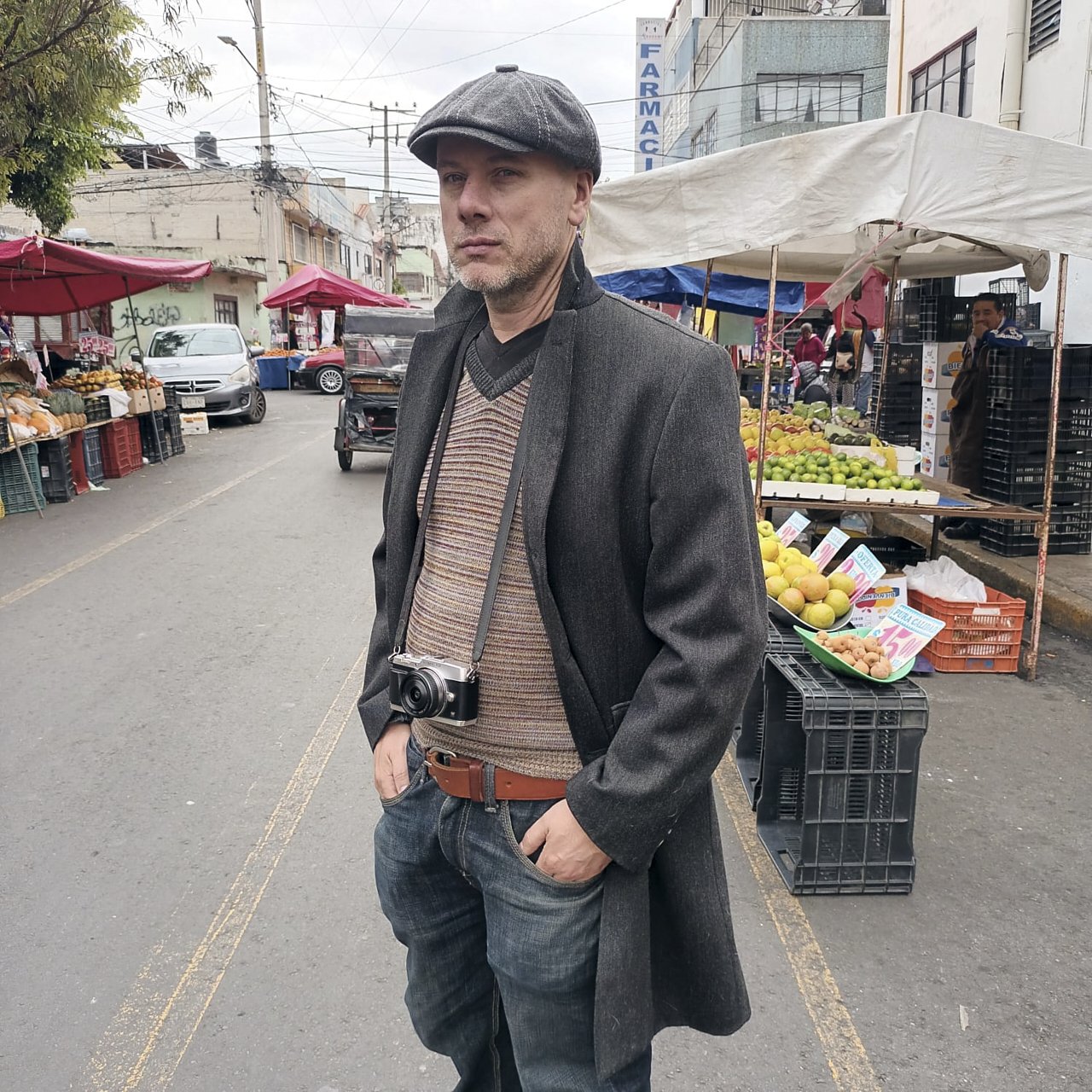
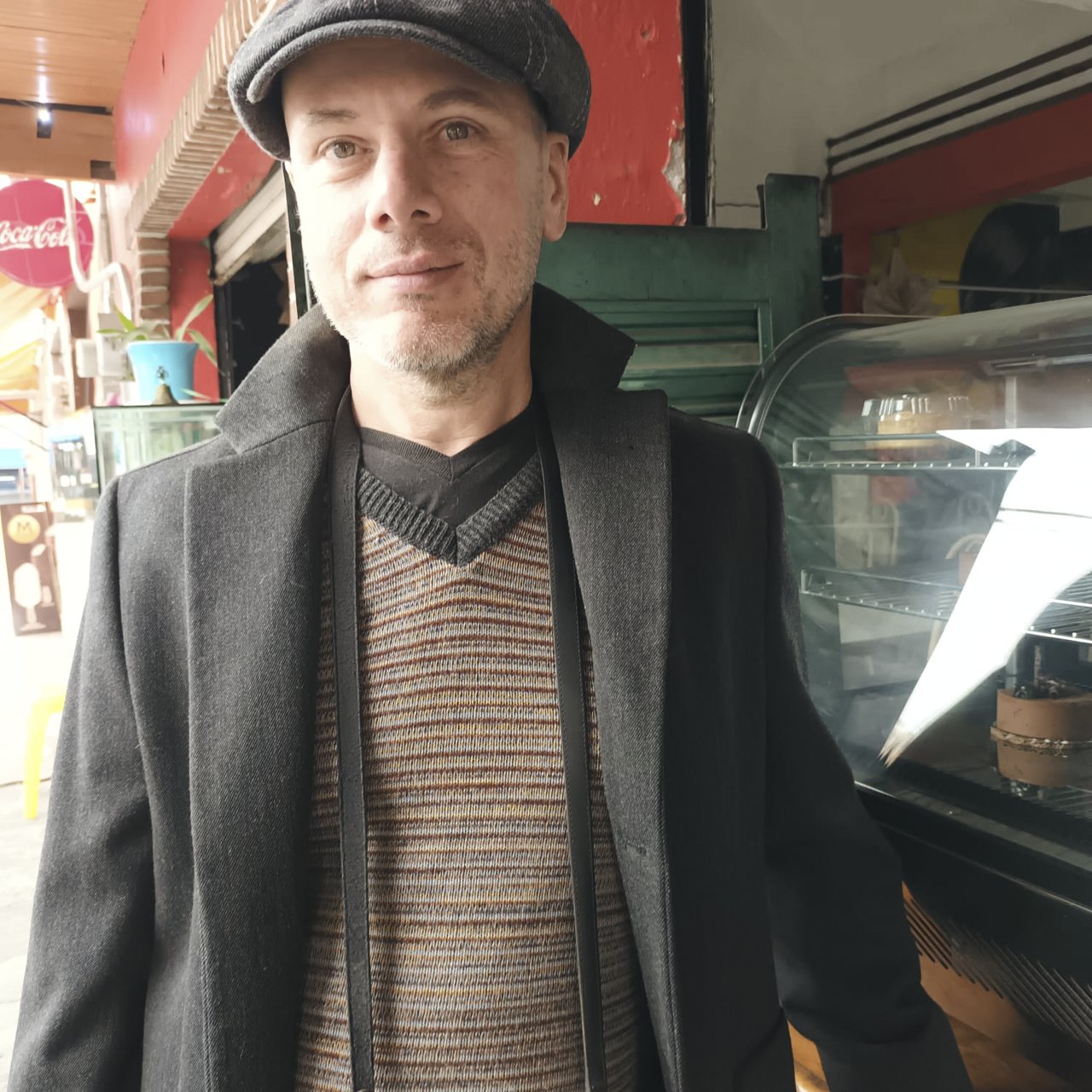
My Tools
I believe that the camera is an extension of the photographer's vision, and every piece of gear I use helps me capture the raw emotions and intricate stories that unfold in both my portrait and street photography. I’ve included this section to give potential clients a deeper understanding of the tools I use to achieve the unique look and feel of my work. For commissioned work my choice at the moment is 100% DSLR: while it may seem like an old-fashioned choice to many, I know I can count on reliability and I can count on tools that allow me to work at my best for my clients.
THE FULL FRAME Canon 5D Mark II: My go-to for professional portraits and environmental photography, delivering exceptional depth and clarity in my black-and-white images. It is great also for commissioned editorial work, shooting that case in RAW if requested by the client and color can be also an option.
THE EVERYDAY CAMERA Sony a6000: Main camera for street photography and second camera for editorial work and portraits.
THE STREET PHOTOGRAPHY KILLER Canon M200: This is my Ricoh GR withut being a Ricoh camera, even better than the Ricoh in my opinion.
THE LIGHT DSLR Canon Rebel T7: A reliable companion for quick, spontaneous moments, especially when I’m in fast-moving street environments. It is used also for assignments like editorial and journalism. .
THE 35mm RANGEFINDER Canon 7: The Japanese Leica with a 50mm mounted is my rangefinder 35mm choice.
For videos I use currently my iPhone 8.
Current Lenses:
Canon 50mm 1.8 STM: the nifty fifty is a great lens delivering sharp images and beautiful background blur, that is 50mm for the FF and and an 80mm for my Rebel. (5D-T7)
Canon 24mm 2.8: My choice for street photography, allowing me to capture wide scenes (it is a 38.4mm eq.) while maintaining focus on key subjects. It is a everyday lens working great also for portraits. (T7)
Albinar ADG 28mm 2.8: A vintage lens to use with my Canon 5D for street photography. (5D)
Yongnuo 50mm 1.8: Good not perfect alternative to my Canon 50mm for capturing portraits with a beautiful, natural depth of field. (5D - T7)
7Artisans 25mm 1.8: A manual lens for my street photography. (a6000)
Sony 16-50mm: Just the kit lens, but the best kit lens ever seen going with a camera. (a6000)
Sony 16mm: Discontinued, underrated lens, with a lot of bad reviews on YouTube. I think is a responsive lens good for street photography and environmental portraits. (a6000)
7Artisans 27mm: AF, equivalent to a 40.5mm in FF, the ideal lens for my street photography but also an everyday solution that is good for anything, from portraits to documentary coverage. (a6000)
Industar-61 52mm: The Industar-61 is a Soviet lens highly regarded for its sharpness and the vintage character it gives to images. (Canon 7)
Canon 22 2: this lens makes a fantastic killer combo with my Canon M200 for street photography. (Canon M200)
GET TO KNOW ME QUESTIONS
What is your favorite food? Pizza and any dish including fish. I love also gourmet panini.
What is your favorite drink? Negroni.
Favorite Mexican food? I have 2: enchiladas suizas and...cemitas!
What is the best vacation you have ever taken? Vacation? What is that?
What is the bravest thing you ever did? Moving to Mexico.
What is the coolest thing you ever made? Moving to Mexico.
What is the greatest accomplishment of your life? To do what I want.
What is on your bucket list? Going back to Sardinia, even if it were just a few days.
What is the sport in which you gave your best? Basketball.
What is your football team? AS Roma.
What skill would you most like to learn? I would like to play sax.
Aside from necessities, what one thing could you not go a day without? A camera.
What song can be the soundtrack to your life? "Don't fear the reaper" Blue Öyster Cult.
Best Rapper? Tupac Shakur.
Guilty music you listen? Alizée.
What actor would you choose to play you in your biopic? Luca Marinelli. Or Jason Bateman.
What are your favorite TV shows? Bewitched. Addams Family. Northern Exposure. Breaking Bad. Better Call Saul.
What were you doing that was special as a teenager? I was a deejay. I also made mix tapes and sold them to friends.
If you could make one rule for everyone in the world to follow, what would it be? Mind your own business.
What are you most excited about right now? Constantly, the idea of making art.
What makes you awesome? Really thinking outside the rules and being an anti-system. And...when I wear a coat, something very rare anyway living here.
What is your definition of success? Not having to worry about money, but I don't mean being rich. Just to live in peace.
How has your perspective on the world changed over time? Unfortunately they have taken away from me the illusion that most people are good. These last three years in the world have been very revealing in this sense. And it's not a good feeling at all.
Where do you think we go when we die? To be born again.
When did you first feel like an adult? I think with the first sexual impulses that were quite early.
What do you enjoy spending money on? Books and...hats.
If you could choose one superpower, what would it be? To fly. I don't love the highs, in fact I suffer vertigo, but the idea to move quickly from one place to another on the planet would really come in handy.
What is your most random impulse buy? Hats.
What would your warning label say? Outspoken and politically incorrect guy
What is the dumbest way you injured yourself? I stabbed a tree and the knife closed causing a good cut on my hand. Well deserved, I think, because a tree doesn't deserve to be stabbed.
What is your guilty pleasure? Nutella.
What is the worst outfit you ever wore? Tight leather pants during my metal/punk era. A miracle that still works for me down there.
What is the best place you ever traveled to? Oaxaca.
What is your favorite season? Autumn.
What are you allergic to? Idiots.
What is your favorite outfit? A motorcycle leather jacket.
Would you eat an insect for $100? I paid to eat them.
If a time machine was invented tomorrow, would you want to test it out? Yes, and it would be a one way ticket to the 70s.
Do you believe in aliens? I am an alien so yes!
Would you want to be famous? I'm already famous, what the fuck are you talking about?
As you get older, do you get more or less anti-social? I'm by default social, but this world makes me anti-social more and more every day. I am in general anti-idiots, and the world, it seems, is full of idiots.
What is the worst date you’ve ever been on? In one where during the walk I was approached by some guys and one hit me right on the nose with a fist.
What is your favorite number? 7
Do you watch porn? Yes. Porn has also formed a lot of my visual culture. I think the porn of the 70s, the so-called golden era, and the late 90s / early 2000s with gonzos were fantastic. Belladonna was my favorite actress.
What’s the sexiest name you’ve ever heard? Perdita Durango. And...Tura Satana.
What’s the craziest thing you’ve ever done after getting really drunk? I threw up completely inside the ambulance.
What's the most creative insult you can think of? Give it to your ass and burn on your hair.
Have you ever consumed so much alcohol that you passed out? Yes, that time of the ambulance...
What do you believe is the most horrible way to die? Dying at home because you're afraid to go out, because in reality you've stopped living.
I have always liked to make sure that my experience and activity as a photographer brought benefits to the whole photographic community. I have received so much from photography and I feel that giving to others a little of what I have had is a mission. This site was born with this idea.
Alex


